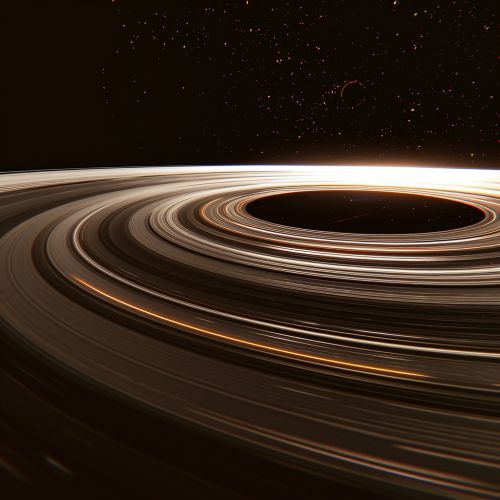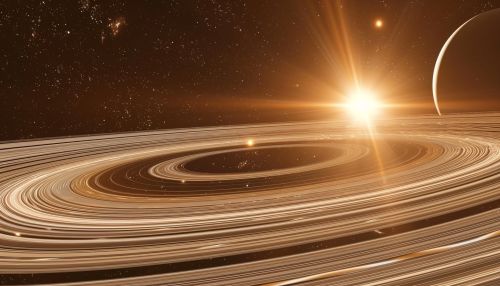Planetary Ring Systems
Introduction
A planetary ring is a ring of cosmic dust and other small particles orbiting around a planet in a flat disc-shaped region. The most notable and visually impressive examples of planetary rings are those around Saturn, but the phenomenon is not exclusive to this planet. Other examples of planetary ring systems can be found around the other gas giants in the solar system: Jupiter, Uranus, and Neptune.
Formation
The formation of planetary ring systems is a subject of ongoing research and debate among astronomers. One prominent theory is that the rings are remnants of a moon or moons that were shattered by the planet's gravitational forces. Another theory proposes that the rings are leftover material from the formation of the planet itself, which never coalesced into a moon due to the planet's strong gravity.
Composition
Planetary rings are primarily composed of ice particles with a smaller amount of rocky debris and dust. The exact composition can vary depending on the specific planetary ring system. For instance, the rings of Saturn are almost entirely made up of ice particles, while the rings of Uranus and Neptune are darker and likely contain a higher proportion of rocky material.
Structure
The structure of a planetary ring system can be quite complex. The rings are not solid, but are composed of countless small particles, each orbiting the planet independently. These particles range in size from tiny, dust-like grains to larger chunks several meters in diameter. The rings can also contain larger bodies known as moonlets, which can be several kilometers in diameter.


Dynamics
The dynamics of planetary ring systems are governed by a combination of gravitational and collisional forces. The gravitational pull of the planet causes the particles in the ring to orbit around it, while collisions between particles can cause them to spread out and maintain the ring's flat, disc-like shape. The gravitational influence of nearby moons can also play a significant role in shaping the structure of the ring system, creating gaps and waves in the rings.
Observation and Study
The study of planetary ring systems has provided valuable insights into the processes that shape our solar system. Observations of these systems can be made from Earth using telescopes, but the most detailed information has been obtained through spacecraft missions. These missions have provided close-up images and data on the composition, structure, and dynamics of these fascinating celestial objects.
Significance
Planetary ring systems are not just beautiful to look at; they also hold important clues to the history and evolution of our solar system. By studying these systems, scientists can learn more about the processes that led to the formation of the planets and their moons, as well as the dynamic forces that continue to shape these systems today.
